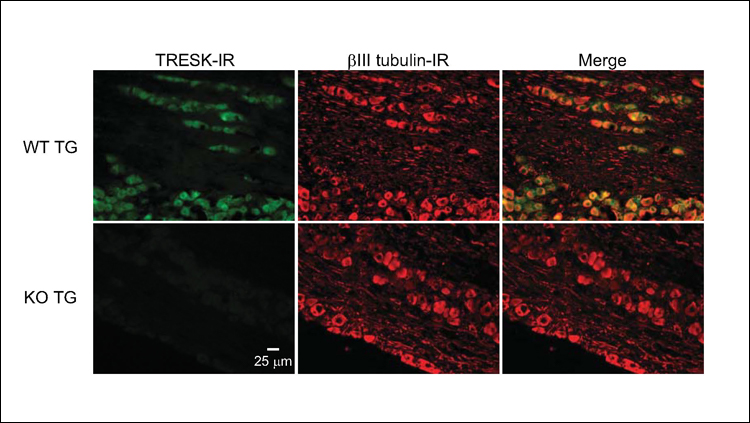Defective Potassium Channels Cause Headache, Not Body Pain

Defective potassium channels involved in pain detection can increase the chance of developing a headache and could be implicated in migraines, according to research in mice published in eNeuro.
A type of potassium channel called TRESK is thought to control the excitability of peripheral sensory neurons that detect pain, heat, cold, and touch. Even though these channels are found throughout the neurons sensing both body and facial pain, channel mutations are linked only with headaches and not body pain.
Yu-Qing Cao and colleagues at Washington University in St. Louis analyzed a knock-out mouse with defective TRESK channels and measured the resulting neural activity. The researchers found that only facial pain receptors were more excitable, and that the sensory neurons had more spontaneous activity. Using behavioral tests, the scientists observed that the knock-out mice showed increased sensitivity to temperature and touch stimuli on their faces, as well as more headache-related behaviors, but no body pain behaviors.
These results indicate that TRESK channels have cell-specific roles and are responsible for regulating pain in facial sensory neurons, making them a target for migraine treatment research.
Read the manuscript in eNeuro: TRESK K+ Channel Activity Regulates Trigeminal Nociception and Headache

















